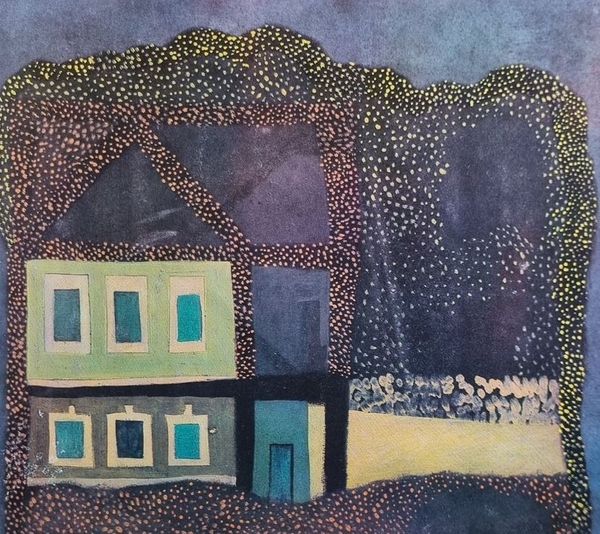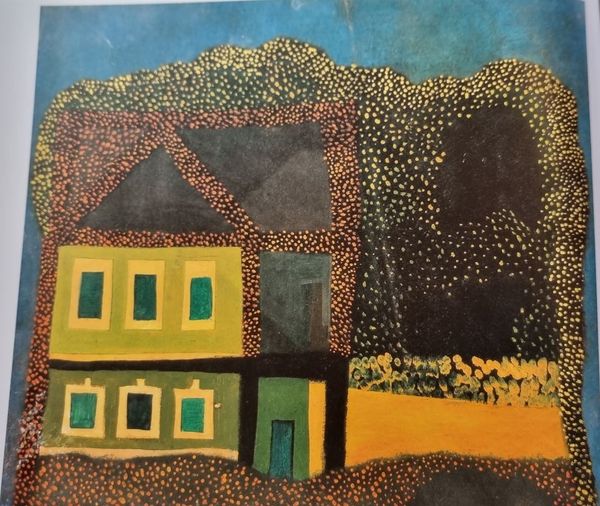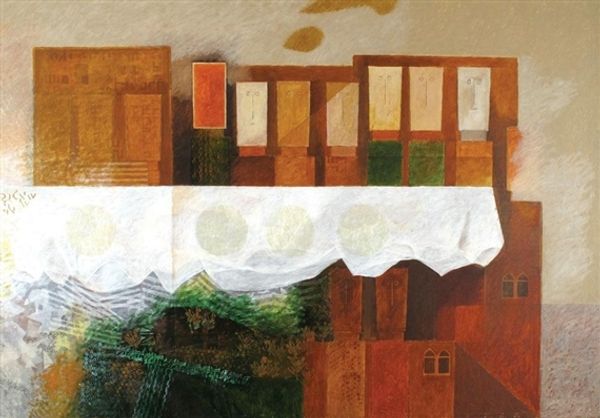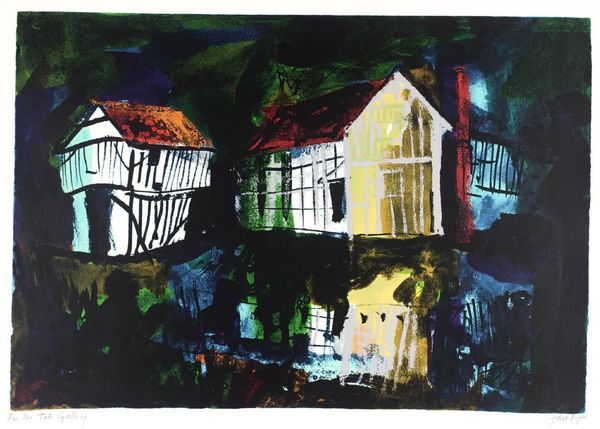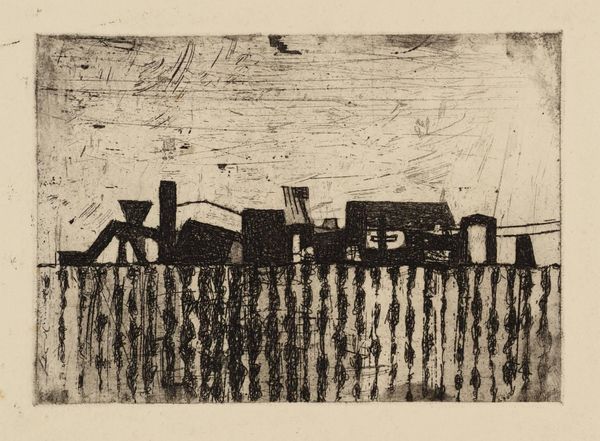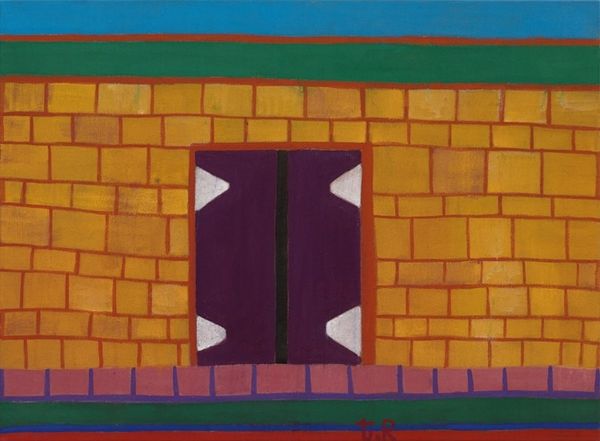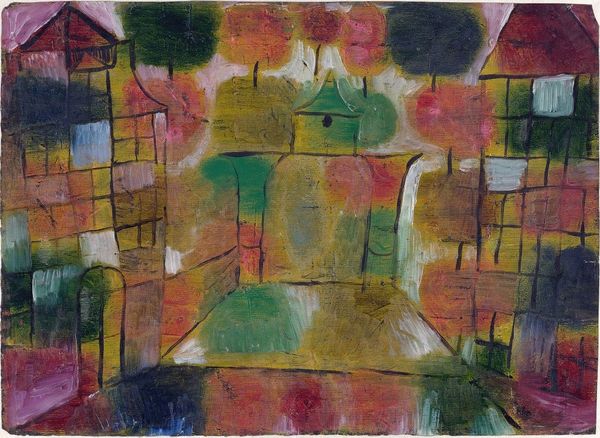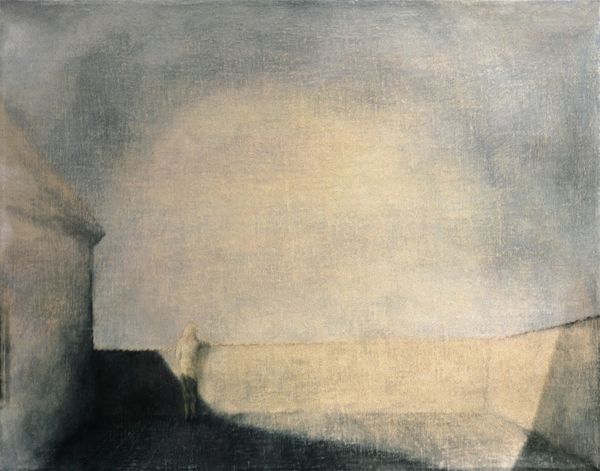
Copyright: Public domain
Curator: Here we have Vajda Lajos’s "Spotty House," a mixed-media piece from 1936. Editor: My initial impression is this is unsettling, almost oppressive. The dark palette and enclosed space… Curator: The overall composition, a relatively flattened facade, does close in on itself, doesn't it? I see that sense of compression operating structurally. The way Vajda Lajos overlays geometric forms gives it an almost claustrophobic quality. It could evoke a sense of urban isolation perhaps. Editor: Urban is a generous word, at least from my viewpoint. What grabs me here are the mixed media elements – especially what looks like paint – used to create this pattern. The systematic labor behind each spot creates texture but it simultaneously obliterates the space. Curator: I note your focus on labor; interesting to approach from a materialist point of view. From a formalist point of view I'm drawn to the repetitive patterns. The artist does appear fixated with spots framing the structure. Editor: True. Look at the spots. Is the application deliberate? The accumulation feels significant. Are we looking at decay or disguise? I'm drawn to what seems to be an attempt to redefine value – repurposing cheap media to make art. Curator: An Expressionist painting like this makes those kinds of questions about subjective response important, I think. It uses basic geometry, repeated motifs, to represent its inner psychological space, which it does seem to imbue with feelings of alienation. Editor: Which really connects the form of it with its historical circumstances, given the rise of urban centers. These sorts of visual choices, from material usage to structural design, speak to a world undergoing massive transformation, and maybe, a sort of decay in craft due to industrialization? Curator: An interesting observation, how the exterior form is influenced by a period of political turbulence and unease that seeped in through visual motifs, but is further heightened through color theory; for example, the high-keyed acid greens make the architecture read artificial. Editor: I find myself respecting it for not flinching away from the harsh realities of existence. An exploration of the labor to build art. Curator: Agreed. The artwork lingers with you long after you have passed by; a testimony of material presence and the impact of expressionist form.
Comments
No comments
Be the first to comment and join the conversation on the ultimate creative platform.
